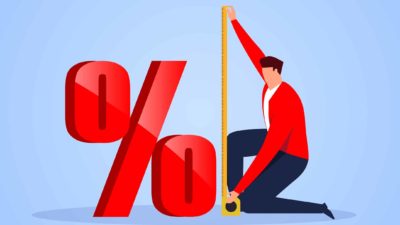Later today, the Reserve Bank of Australia is meeting to decide on the cash rate again.
And much likes its previous meetings, the market is expecting the central bank to act decisively to combat inflation.
What is the market expecting the RBA to do?
According to the latest cash rate futures, the market has priced in an 83% probability of a 50 basis points increase in the cash rate to 2.35%.
If this forecast proves accurate, it will be the fourth consecutive meeting that the Reserve Bank has increased the cash rate by this margin.
The economics team at Westpac Banking Corp (ASX: WBC) agree with the market. According to the latest Westpac Weekly economic report, its team are expecting the central bank to raise the cash rate to 2.35% today.
Chief Economist, Bill Evans, commented: "We are confident that the Board will decide to raise the cash rate by a further 50 basis points to 2.35%."
When will the RBA stop raising rates?
If you're a borrower, you'll no doubt be hoping that the Reserve Bank stops raising rates and making your repayments higher. When will this happen?
Unfortunately, I don't have good news for you. While Westpac believes that this is likely to be the last 50 basis points increase, it doesn't expect Philip Lowe and his team to stop at 2.35%.
Evans is expecting rates to keep rising in smaller increments in the coming months, taking the cash rate up to 3.35% by February. He explained:
Having quickly moved policy into that neutral zone (225 basis points in four months – five meetings) we expect the Board will decide to slow the pace of increases to 25 basis points from the October meeting. This second stage of the tightening process, with consecutive 25 basis point increments, is expected to extend out to February next year with the rate peaking at 3.35%.
While a lot can of course change between now and then, Evans believes that it would be unwise to take rates any higher than that. He commented:
At that point [in February] we expect that it will become evident that the Australian economy is clearly slowing with clear evidence of continuing deterioration as the series of rate hikes and high inflation weigh on households and businesses.
Furthermore, although both headline and underlying inflation will be rising on an annual basis, the quarterly increase in underlying inflation will have slowed from 1.5% (September quarter) to 1.2% (December quarter) with the prospect of a further slowing to 0.8% in the March quarter.
Time will tell if this prediction come true.









